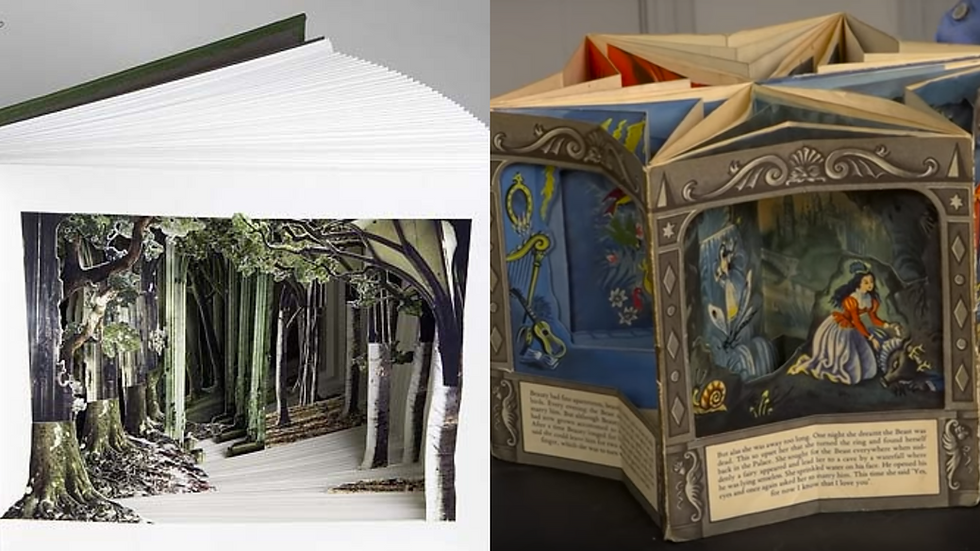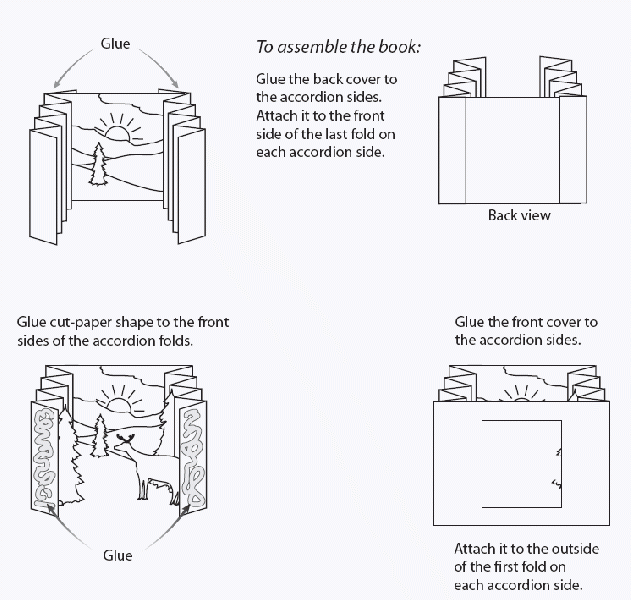Sculptural Books: Carousel & Tunnel
- Crystal J Ann

- Aug 8, 2022
- 3 min read

I was trying to think of the best way to represent my book on covid and I felt the form of the tunnel book from the antique book fair calling to me. I did some more research on tunnel books and while doing so I also stumbled onto carousel books. My research was focused on understanding their origin and whether they would be a good fit for the way I wanted to tell my story.
Books not only contain information but can also be a way to explore our surroundings in unique ways. Sculptural books are ways of three-dimensional bookmaking. Variations on the accordion fold, tunnel and books are unique. These structures are ideal for making artist books, children’s books, and unique presentation items. Tunnel and Carousel books have historically been used for children’s books or keepsakes and the flag book combines the accordion with pages that move as you open the book.
Tunnel Books
In the category of movable books, tunnel books represent a unique mixture of storytelling with three-dimensional art. Tunnel books contain pages that are held together by folded strips of paper on each side. In fact, the sides of the book might make you think of an accordion. The overall effect is an illusion of depth and perspective.
How do you “read” a tunnel book?
You look through a hole in the front cover. Each page features openings that allow the reader to see through to the back page. The images on each page work together to form a three-dimensional scene. This helps tell the story.
Tunnel books date all the way back to the mid-18th century, when they were originally called “peep shows.” The concept was inspired by theatrical stage sets. Have you ever seen a live play with movable set pieces, almost like a two-dimensional puppet show? If so, you may understand how they inspired tunnel books.
Where did the name “tunnel book” come from?
Many of these types of books were created to celebrate the building of the tunnel under the Thames River in London in the mid-19th century. The name may have come from this. Throughout history, tunnel books have often been used to commemorate certain events. They’ve also often been sold as souvenirs at tourist attractions.
Tunnel books are still made today. Artist Carol Barton creates modern tunnel books that are very popular. Some artists have taken tunnel books to the next level. They turn their accordion sides and front and back covers into canvases for additional artwork.
How is it made?
It’s made of paper panels that are spaced in a specific way. When a viewer stands in front of the artwork it looks like a complete landscape, scene, or setting. As the viewer moves around, they can look through, above, and below the work of art and see separate worlds within the same piece. They are surprising, innovative, and technically amazing. They are basic to make, but have a big impact when fully constructed.
Tunnel books or peep shows are a series of cut-paper panels placed one behind the other, creating the illusion of depth and perspective. Often, these are engineered like an accordion, with the two boards pulling apart and the illustrated panels lined up and viewed through a front peep-hole or viewer.
When popped open, multi-layered paper tunnel books reveal miniature worlds viewers can peek into as into dioramas. Structurally, tunnel books belong in the same family as carousel books and toy theaters and were extremely popular during the Victorian era.
Carousel Books
Carousel books, sometimes called 360° books or 3D pop-up books, are a sub-category of pop-up books, but they're so distinct that they deserve their own list here on the site. Carousel books are bound like regular picture books, but the front and back covers are designed to touch so that the book opens all the way into a 360° circle (they usually have ribbons or magnets to connect the front and back covers).
Movable and pop-up books are made with a variety of paper construction types and mechanisms that control the movement of the action on the pages. One type of movable book form is a carousel book. A carousel looks like an ordinary flat two-dimensional book, but when opened, it unfolds into a 360-degree circle when stood upright.
A carousel book becomes a three-dimensional object that can be viewed from all angles. It opens until the back and front covers touch and can be held as a circle by tying the attached ribbons.












Comments